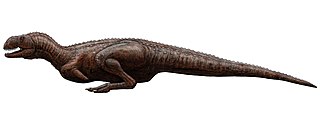
Indosuchus is a genus of abelisaurid dinosaur from the Late Cretaceous Period, a theropod related to Abelisaurus. Like most theropods, Indosuchus was a bipedal carnivore. It was about 7 metres long, weighed about 1.2 tonnes, and had a crested skull, flattened on the top. Other authors estimated it to be 9.7 meters in length and 2.3 tonnes in weight.

Campylodoniscus is a genus of titanosaur sauropod dinosaur from the Late Cretaceous Period of what is now Argentina.
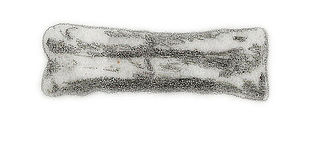
Teinurosaurus is a genus of carnivorous theropod dinosaur. Teinurosaurus lived during the Late Jurassic in what is now Portugal. The type species is Teinurosaurus sauvagei. It's been estimated to be 11.4 m in length and 3.6 tonnes in weight.
Velocipes is a possible theropod dinosaur genus from the Late Triassic. Its fossils were found in the Norian-age Lissauer Breccia, now in southern Poland.

Sarcosaurus is a genus of theropod dinosaur, roughly 3.5 metres (11 ft) long. It lived during the Sinemurian stage of the Early Jurassic, about 194 million years ago. Sarcosaurus is one of the earliest known Jurassic theropods, and one of only a handful of theropod genera from this time period.
Brasileosaurus is a genus of possible notosuchid notosuchian from the Late Cretaceous Adamantina Formation of Brazil. The type species is B. pachecoi, discovered by the Brazilian Eng. Joviano Pacheco and described by the prolific German paleontologist Friedrich von Huene in 1931.

Laplatasaurus is a genus of titanosaurian sauropod dinosaur that lived during the Late Cretaceous in South America.

Magnosaurus was a genus of basal tetanuran theropod dinosaur from the Middle Jurassic of England. It is based on fragmentary remains and has often been confused with or included in Megalosaurus.
Tanystrosuchus is a dubious genus of theropod dinosaur from the late Triassic period. It is known from a single fossil neck vertebra of the species T. posthumus, found in the Middle Stubensandstein formation of what is present-day Germany.

Thecocoelurus is a dubious genus of theropod dinosaur from the early Cretaceous period of England. It is paleontologically significant for being one of the first ornithomimosaur specimens known from England and represents the earliest record of Ornithomimosauria in Europe.

Compsosuchus is an extinct genus of abelisaurian dinosaur. It lived during the Late Cretaceous in India.
Efraasia is a genus of basal sauropodomorph dinosaur. It was a herbivore which lived during the middle Norian stage of the Late Triassic, around 210 million years ago, in what is now Germany. It was named in 1973 after Eberhard Fraas, who during the early twentieth century collected what were the original type specimens.
Dolichosuchus is the name given to a genus of dinosaur from the Triassic. It was originally classified in the disused family Hallopodidae, but has since been reclassified as a coelophysoid. A single fossil was found in Germany. Since only one bone was discovered, the genus is considered a nomen dubium. Some scientists have noted that the tibia closely resembles those of Liliensternus and Dilophosaurus.
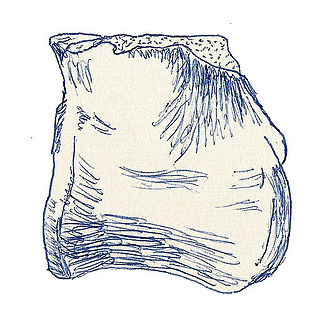
Dryptosauroides is the name given to a genus of dinosaur from the Late Cretaceous. It was a large theropod, possibly belonging to the Abelisauridae. It was 10 meters long and 1.5 tonnes in weight.

Erectopus is a basal allosauroid theropod from the Lower Cretaceous of France.
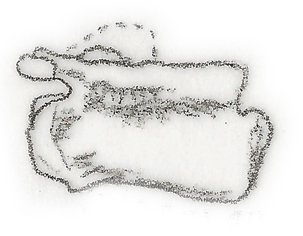
Jubbulpuria is the name given to a dubious genus of small dinosaur from the Late Cretaceous of India.
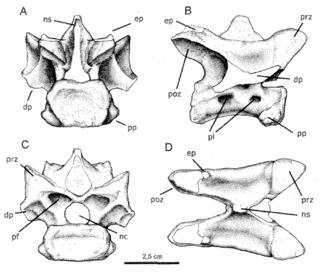
Laevisuchus is a genus of abelisauroid theropod dinosaur from the Late Cretaceous. Its remains were discovered by Charles Alfred Matley near Jabalpur in Maastrichtian deposits in the Lameta Formation in India, and were named and described by paleontologists Friedrich von Huene and Matley in 1933. The type species is Laevisuchus indicus. The generic name is derived from Latin laevis, "light" and the Greek name for the Egyptian crocodile god, Soukhos. The specific name means "Indian" in Latin. It is known only from three cervical vertebrae and a dorsal vertebra. A holotype was not assigned by Huene and Matley and a lectotype has never been chosen from the syntypes. All remains except GSI K27/696 were lost; GSI K20/613 was rediscovered in 2012.

Geikiidae is a family of Late Permian dicynodonts. Fossils are known from Scotland, South Africa, and Tanzania. The family was first named by Franz Nopcsa in 1923, although Friedrich von Huene's 1948 description of the family brought it into common usage. Von Huene established Geikiidae as a monotypic family for Geikia, then known from Scotland. He distinguished Geikia from all other dicynodonts because it lacked a preparietal bone. The outlines on the bones of the skull roof could not be seen however, meaning that this characteristic was uncertain in geikiids. Geikiids were originally classified as close relatives of Dicynodon and Lystrosaurus, but the characters that linked these dicynodonts are also seen in many other forms. It is more likely that features seen in Dicynodon and Lystrosaurus, such as widely separated eye sockets, evolved in parallel in geikiids.
Theropsodon is an extinct genus of traversodontid cynodonts from the Middle Triassic of Tanzania. Fossils have been found from the Manda Formation. A single holotype skull of the type species T. njaliliris was named by German paleontologist Friedrich von Huene in 1950.
Scalopodon is an extinct genus of therocephalian therapsids from the Late Permian of Russia. The type species Scalopodon tenuisfrons was named in 1999 from the Kotelnichsky District of Kirov Oblast. Scalopodon is known from a single fragmentary holotype specimen including the back of the skull, the left side of the lower jaw and isolated postorbital and prefrontal bones. The skull was found in the Deltavjatia Assemblage Zone, which dates back to the early Wuchiapingian about 260 million years ago. Distinguishing features of Scalopodon include narrow frontal bones and a distinctive sagittal crest along the parietal region at the back of the skull. Scalopodon was originally classified in the family Scaloposauridae, and was the first scaloposaurid found in Russia. More recent studies of therocephalians have found scaloposaurids like Scalopodon to be juvenile forms of larger therocephalians and do not consider Scaloposauridae to be a valid group. Scalopodon and most other scaloposaurids are now classified as basal members of Baurioidea.












